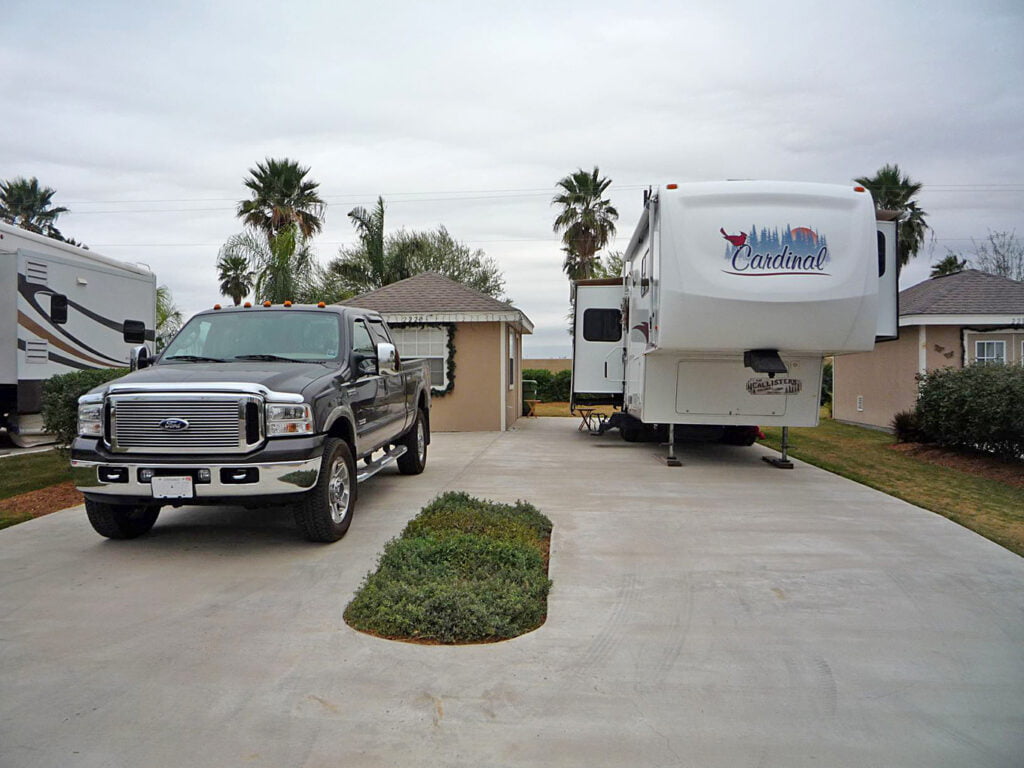You may be familiar with towing weights like gross weights, maximum weights, and combined weights, but have you ever wondered how accurate the information we get on these weights is? I have tried to explain the issues and confusion around manufacturers’ payload ratings in the past, but frankly, I ended up coming away with more questions than answers. Over the last few weeks, I’ve been talking to contacts and scouring the internet for more solutions and have come up with a few. The answers I’ve been looking for seem to have everything to do with how manufacturers and government agencies define “truck classes.”
Here’s a Quick Recap
In a previous blog, I used my truck as an example of how the published weights don’t add up. Here’s a quick recap before we get into truck classes.
2019 Ram 2500 4×4 Crew Cab 6’4” box
(From Ram’s Towing and Payload chart)
Gross Vehicle Weight Rating (GVWR): 10,000 lb
Note: GVWR indicates the maximum truck weight plus what it can carry fully loaded. That includes the truck’s weight, fuel, cargo, passengers, and the trailer tongue.
Base Weight:
Front axle supports: 4,627.74 lb
Rear axle supports: 2,857.15 lb
Base weight total: 7,484.89 lb
Note: These numbers add up to the Total base weight, but then we look at each axle.
Payload: 2,520 lb
Note: The payload added to the base weight comes out to 10,004.89 lb, the published GVWR.
Gross Axle Weight Rating (GAWR):
Front axle: 5,750 lb
Rear axle: 6,000 lb
Note: These two numbers add up to 11,750 lb, not the GVWR of 10,000 lb.
Gross Combined Weight Rating (GCWR)
Truck and trailer: 27,000 lb
GCWR minus GWR is 17,000 lb. However, the Max Trailer Weight Rating is 19,040 lb.
As I pointed out previously, the numbers don’t add up.
The Big Question: What difference does it make if the GVWR is over 10,000 lbs.?
The 10,000 lb. weight limit kept coming up when I looked for answers. I learned that it’s the classification break between Class 2B and Class 3 and that many government requirements for construction, emissions, safety, fuel consumption, and taxes change significantly between these two classes. However, even after going down a rabbit hole of information, I still couldn’t find a straightforward answer to this question.
Still, I can paint a picture of what guides and dictates how truck manufacturers make decisions about their vehicles. Here are some of the things that manufacturers think about when they’re designing trucks for North America:
Wikipedia lists the truck classes as:
Class 2a Light duty 6,001–8,500 lb
Class 2b Light duty 8,501–10,000 lb
Class 3 and above Heavy duty over 10,000 lb
These are the same in Canada and the US. Certain states also use these vehicle classes to determine vehicle road and fuel taxes, access to roadways, and idle reduction and emissions reduction requirements, says Wikipedia.
What other information can impact a truck’s listed weight?
Below is some other class-related information I discovered, which impacts the weights each manufacturer lists on its trucks.
Vehicle licensing:
In 2022, Ontario waived the annual license sticker requirement for light-duty vehicles with a base weight under 3,000 kg. The yearly cost for cars (including personal vehicles) with a bottom weight of over 3,000 kilograms is still in place.
In Ontario, effective July 1, 2019, the weight threshold for other exemptions already granted to personal-use pickup trucks under the Highway Traffic Act related daily inspections, hours of service and class of driver’s license for towed house trailers changed from 6,000 kg GVWR to 6,500 kg GVWR. This includes the threshold for the annual “yellow sticker” safety inspection.
Environmental rules:
The U.S. Environmental Protection Agency and Natural Resources Canada are charged with setting out the emissions targets and related requirements to the manufacturers. These agencies use the classifications as the umbrella under which each class must adhere to its emissions rules, whatever they may be. Also found under these classes are the governments’ targets for average fuel consumption. Green House emission credits are also calculated using the marks for each category. Within the companies themselves, a plus/minus calculation (regarding overall targets by the company) is always going on. A plus for building small fuel efficiency (and EV) vehicles and a minus for making the heavier classes.
Safety requirements:
Government-mandated safety builds requirements are also different based on Classes, usually looking at base weight as a key dividing factor. These requirements on the manufacturers can also influence how overall consequences are reported.
Tax-related:
Purchase taxes and credits vary by jurisdiction, often by class. In Canada, for instance, a 6,000 lb vehicle tax deduction is a rule under the federal tax code that allows people to deduct up to $25,000 of a vehicle’s purchasing price on their tax return (under certain circumstances). According to the GVWR, the car purchased must weigh over 6,000 lbs but no more than 14,000 lbs.
Government’s Influence
To illustrate my point on the government’s influence on truck manufacturing practices, I want to share a quote I found on Wikipedia.
“In 1975, a change in U.S. emission laws required any vehicle under 6000 lbs GVWR to burn unleaded fuel. U.S. pickup truck manufacturers responded with a “heavy half” pickup of over 6000 lbs. GVWR. The F-150 had a capacity of over 2000 lbs, compared to 1500 lbs for the F-100.”
If you’re old enough, you may remember that Ford sold the F-100 and F-150 simultaneously for a couple of years in the late 70’s – then discontinued the F-100. I remember that leaded and unleaded fuel were sold side-by-side for years, and unleaded was always more expensive. Until I read the quote above, I never knew that the move to the F-150 was in response to this government emissions law.
For these reasons, and no doubt many more I don’t know about, the actual payload number on my truck may never be revealed. At least I know it’s not as simple as my lousy math.




